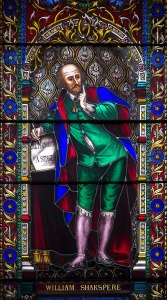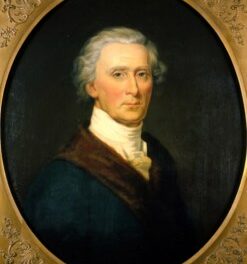We support our Publishers and Content Creators. You can view this story on their website by CLICKING HERE.
 Why, one wonders, should one of the most famous people in history be featured as one of the unsung heroes of Christendom? This would seem to be a good question until we realize that most people do not perceive Shakespeare as a hero of Christendom. He is sung, to be sure. He is sung more widely and more loudly than almost anyone. But he is not sung in tune.
Why, one wonders, should one of the most famous people in history be featured as one of the unsung heroes of Christendom? This would seem to be a good question until we realize that most people do not perceive Shakespeare as a hero of Christendom. He is sung, to be sure. He is sung more widely and more loudly than almost anyone. But he is not sung in tune.
On the contrary, he is sung out of tune. His songs are sung discordantly and disgracefully by a whole motley of meddlesome modernists and postmodernists. He is the victim of radical feminists, Marxist theorists, queer theorists, Nietzschean nihilists, post-colonialists, anti-racists, and woke dogmatists, none of whom know who Shakespeare was, how he sung, or what he was singing about.
In order to sing as Shakespeare sung, we need to understand that his Muse, the source of inspiration for all his music, was profoundly Catholic.
Let’s look at the facts of Shakespeare’s life as a means to understanding the songs that he sings in his poetry and plays.
Shakespeare was born in 1564,in the early years of the reign of Elizabeth I (Bloody Bess), a tyrant whose reign was characterized by her merciless quest to destroy the Catholic Church in England. It was illegal in Shakespeare’s time to practice the Catholic Faith and punishable by death to be a Catholic priest or to hide a priest from the priest-hunters. In the midst of such tyranny, Shakespeare was raised by staunchly Catholic parents.
Members of his mother’s family, the Ardens, were known for their defiant Catholic recusancy (“refusers of Protestant communion”), defying the tyrannical laws which required that everyone attend the services of the heretical state religion. They suffered death, imprisonment, and exile. Shakespeare’s father appears to have resigned from his involvement in local politics when it became required by law for local government officials to take the Oath of Supremacy, thereby swearing allegiance to the queen as head of the Church. He was fined for his Catholic recusancy in 1592 and hid an incriminating Catholic confession of faith in the rafters of his house for fear of its being discovered. Shakespeare’s daughter, Susanna, would also be fined for her Catholic recusancy in 1606.
As for Shakespeare himself, it seems that he remained a resolute Catholic. Although there is no record of his being fined for his recusancy, there is also no evidence that he ever attended the state religion’s services. He was fined in 1596 for allegedly threatening violence against two disreputable characters who had boasted of their role in raids on Catholic homes. Whereas Shakespeare’s co-defendants in this court case included known Catholic recusants, one of his two accusers was “one of the extreme Puritans” who had boasted in a report in 1585 of a raid on a Catholic home in which “papist” books, pictures, and a crucifix were discovered and confiscated.
Many of Shakespeare’s closest friends were known recusants. His patron, the Earl of Southampton, was a recusant who seems to have had the future Jesuit saint and martyr Robert Southwell as his personal confessor. The biographical and textual evidence also suggests strongly that Shakespeare knew Southwell, and it is clear from Shakespeare’s poetry and plays that he was influenced by Southwell’s own writings and poetry.
The strongest biographical evidence for Shakespeare’s Catholicism is his purchasing of the Blackfriars Gatehouse in 1613. As its name suggests, this was the gatehouse of the Dominican priory in London, which was destroyed by Henry VIII in 1538. Property deeds show that this remained in Catholic hands as a private residence from the time of the dissolution of the monasteries until Shakespeare’s purchase of it 75 years later.
Furthermore, it had been used for many years as a base for the Catholic underground. Priests hid there from the authorities and the house was raided on more than one occasion, with government reports revealing secret passageways to the river which enabled priests to escape. After Shakespeare bought this center for illegal Catholic activity, he stipulated that the existing tenant, John Robinson, should remain in residence, thereby suggesting that the house would continue to be used in the same way.
In the same year in which Shakespeare bought the house, John Robinson’s brother entered the English College in Rome to study for the priesthood. As for Robinson himself, he was evidently a good friend of Shakespeare and the only friend from among Shakespeare’s London acquaintances who was present during Shakespeare’s final illness, signing his will. As for the will, it stipulated that his recusant daughter Susanna should be the executor, and many of the beneficiaries were local Catholic recusant friends.
These facts from Shakespeare’s life, the bare-bones biographical details, are buttressed by the profoundly Catholic elements in his poetry and plays. This is not the place to discuss this dimension of Shakespeare’s work, but readers might want to read the present author’s book Through Shakespeare’s Eyes: Seeing the Catholic Presence in the Plays for a greater understanding of the deep and orthodox faith that animates the Bard of Avon’s work. If anything, this textual evidence is even stronger than the biographical evidence presented herewith.
In conclusion, and to return to the question of the unsung Shakespeare, it is ironic indeed that this greatest of singers should not be proclaimed as a true hero of Christendom.
Republished with gracious permission from Crisis Magazine (November 2024).
This essay is part of a series, Unsung Heroes of Christendom.
The Imaginative Conservative applies the principle of appreciation to the discussion of culture and politics—we approach dialogue with magnanimity rather than with mere civility. Will you help us remain a refreshing oasis in the increasingly contentious arena of modern discourse? Please consider donating now.
The featured image, uploaded by Crisco 1492, is the Shakespeare Window, State Library of Victoria, Melbourne, 2017-10-29. Window commissioned by George Coppin in 1862, made by James Ferguson and James Urie. This file is licensed under the Creative Commons Attribution-Share Alike 4.0 International license, courtesy of Wikimedia Commons.
Share This Story, Choose Your Platform!
Go to Top

 Conservative
Conservative  Search
Search Trending
Trending Current News
Current News 





